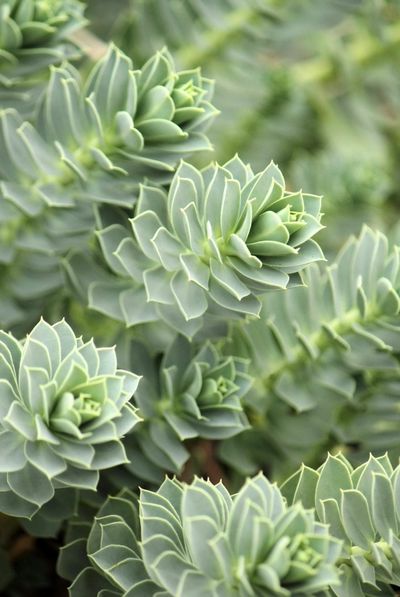What is Myrtle Spurge?
So exactly what is myrtle spurge? It is a species of spurge plant that is a succulent. It also has been called creeping spurge or donkey tail. The myrtle spurge bears yellow flowers, but they are not showy and can be hidden by the bracts. You’ll spot the blue-green succulent style foliage arranged in spirals around the stems. Myrtle spurge plants are native to the Mediterranean, so it’s no surprise that they like sunny locations and well-drained soil. Myrtle spurge plants have a distinctive characteristic that make them problematic in your backyard: they have a white sap that is poisonous if ingested. Myrtle spurge toxicity results in nausea and vomiting. Just touching the sap is also unpleasant, since it can cause skin and eye irritation.
Control of Myrtle Spurge
Myrtle spurge is invasive and keeping control of myrtle spurge is important. It is made more difficult by the fact that myrtle spurge plants can grow from seeds or from bits of root. Once they find their way into the wild, spurge outcompetes native plant communities. Managing myrtle spurge weeds can allow native plants to survive and thrive. For best results, begin myrtle spurge control early. Take the time to learn about the reproductive calendar of the plant. In March or April, the plant flowers. After that, it develops seed pods. Once the seed pods dry, they release the seeds in bursts, projecting them as far as 15 feet (4.5 m.) away. The key to controlling myrtle spurge is to dig out the plants before they set seeds. Put on long sleeves and gloves, then dig and pull the plants from moist soil. Keep an eye on the area for some years after you pull out myrtle spurge plants. It is entirely possible that new plants will grow from the remaining spurge root. One good way to prevent this weed from spreading too quickly is to encourage thick, lush vegetation in areas around it. Keep desirable neighbor plants healthy by offering them the water and nutrients they need.
